Energy Efficient Tennis Court Lighting Design
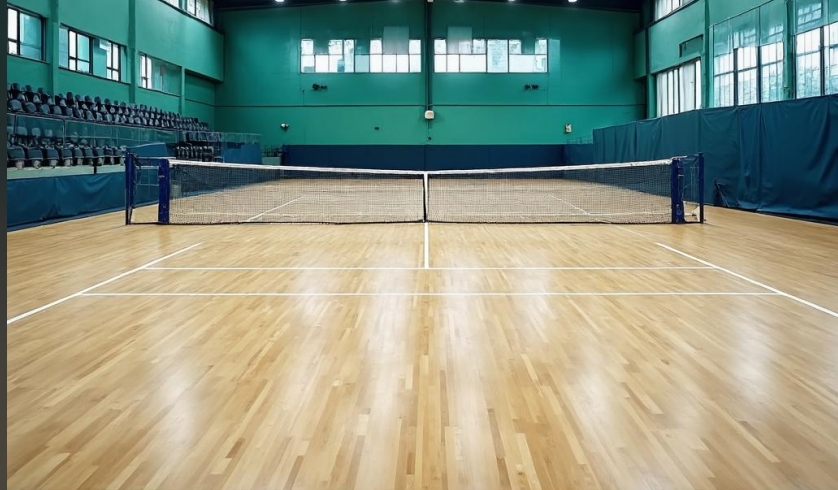
Directory:
1. Energy Efficient benefits of LED light sources
2. Key considerations for LED lighting design in tennis courts
3. Example of Tennis Court Lighting
When designing lighting for tennis courts, electrical designers place great importance on choosing energy efficient fixtures to reduce energy consumption in buildings. With the ongoing advancements in LED technology, LED light sources have gained widespread acceptance in the lighting industry due to their numerous advantages and are now commonly used in tennis court lighting design.
1. Energy Efficient benefits of LED light sources
LED lamps are highly efficient, with light output ranging from 50-200 lumens per watt (lm/W), compared to 12-24 lm/W for incandescent and halogen lamps, and 50-120 lm/W for fluorescent lamps. This means that LED lights can save 80%-90% more energy than traditional sources while providing the same lighting effect. Additionally, a single LED lamp can consume as little as 0.06-1 watt, resulting in lower power usage and minimal heat generation compared to conventional lighting.
2. Key considerations for LED lighting design in tennis courts
Tennis courts have unique characteristics that require their lighting to fulfill multiple functions. The lighting must cater to the needs of various events and live broadcasts while also ensuring a comfortable viewing experience for spectators. To achieve optimal illumination standards and quality, the LED lighting design for tennis courts should adhere to the following essential criteria:
1) Illumination and uniformity: Adequate and uniform lighting is crucial for athletes' performance and referees' accurate judgment, as well as for viewer comfort. Multi-functional tennis courts should accommodate different illumination requirements, aiming for equal horizontal and vertical illumination for the best visual effect. If they cannot be equal, vertical illumination should be at least half of the horizontal illumination.
2) Glare: Glare can significantly hinder athletes' performance, particularly in ball sports, as it affects their ability to judge the ball's direction and landing. To minimize glare, LED lighting should be designed with appropriate projection angles, layout heights, and light distribution.
3) Light color and color rendering: LED lights in tennis courts should provide excellent color rendering and strong color contrast to help athletes make accurate judgments.
4) Energy Efficient: LED lamps should be equipped with intelligent control systems, incorporating effective dimming solutions to enhance energy savings.
5) When setting up LED lighting, it is essential to conduct a thorough analysis of the site plan and perform computer simulations to establish effective lamp placements and various lighting modes that fulfill the illumination needs for training and different competition levels.
3. Example of Tennis Court Lighting
This example pertains to a tennis training facility measuring 36.5m by 19m within a sports training hall. General lighting is utilized, achieving an average illumination level of over 750lx, with a color rendering index (R) greater than 65 and a color temperature of 700K. The uniformity of lighting within the venue should exceed 0.7. while the surrounding area should maintain a uniformity of no less than 0.5. The lighting design adheres to relevant standards, with the specific layout illustrated in Figure 4. A total of 48 LED lamps are installed at a height of 10m. The lighting system is divided into four configurations: professional competition, amateur competition and professional training, training and recreational activities, and cleaning mode, to accommodate its multifunctional lighting requirements.
The chosen lamp has a power rating of 210W, a luminous flux of 21.000lm, a color rendering index of 75. and a color temperature of 5700K. The specific light distribution curve is depicted in Figure 5. Simulations were conducted using DIALux lighting simulation software, with the results shown in Figure 6 and summarized in Table 5. The simulation outcomes align with the actual illumination uniformity and standards required for the tennis training venue, demonstrating optimization.
Fig.4 Arrangement of the luminaires in tennis training ground
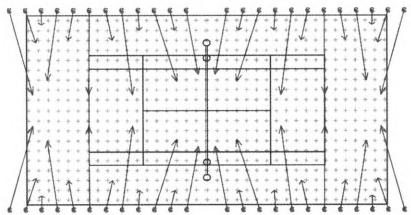
Fig.5 Light distribution curve of the luminaires selected in tennis training ground
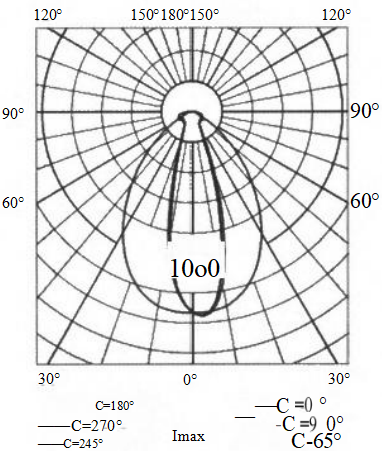
Fig.6 Simulated illuminance result in tennis training ground
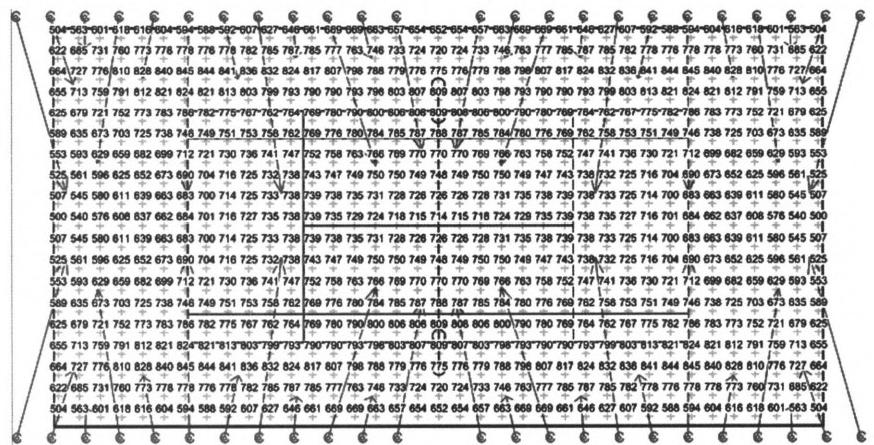
Table 5 Illumination simulation results in tennis training ground
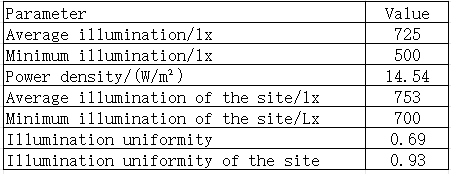
LED lighting, or light-emitting diode lighting, is a semiconductor device that directly converts electrical energy into light energy. When powered on, it transforms 90% of the electrical energy into light, with only a small amount of heat generated during operation. The electro-optical conversion efficiency can reach up to 90%. Unlike traditional lamps that require filament heating and produce heat as a byproduct, LEDs eliminate the need for converting electrical energy into heat before producing light, allowing for direct conversion of electrical energy into light. This results in lower energy consumption for the same brightness level. LED lighting sources are now commonly used in tennis courts.